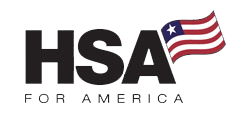Under the Affordable Care Act, the federal government subsidizes individual and family health insurance premiums for certain low- and moderate- income households to make it more affordable.

Health Insurance Subsidies
There are two types of subsidies under the ACA: premium tax credits and cost sharing reductions. Both of these subsidies are financial assistance programs provided by the federal government to help eligible individuals and families afford health insurance.
In this blog, we will delve into health insurance subsidies through the Affordable Care Act. We will explore tax credits and their significance for individuals and families. We will look into the eligibility criteria, and how these subsidies work.
Health Insurance Subsidy Eligibility
Affordable Care Act subsidies are generally available to households of citizens or legal U.S. residents with adjusted household incomes between 100% and 400% of the Federal Poverty Line.
If your income falls below the Federal Poverty Line for a family the size of yours, you may be a candidate for Medicaid.
If your income goes above 400% of the Federal Poverty Line for a family the size of yours, you may not qualify for a subsidy under the Affordable Care Act.
You will likely have to pay full price for your health insurance, or opt for a lower-cost health sharing plan.
The Inflation Reduction Act and expanded premium subsidies
Subsidies under the Affordable Care Act are based on the idea that individuals and families should not be spending more than 8.5% of their incomes on health insurance.
To make this happen, Congress based its system of subsidies on each family’s income calculated as a percentage of the Federal Poverty Level (FPL).
Individuals and families are expected to pay a higher percentage of their income for health insurance as income increases relative to the FPL.
The Inflation Reduction Act of 2022 provides increased premium subsidies for individuals and families purchasing their own health insurance through 2025.
Here is the current table, as of 2023, with the Inflation Reduction Act provisions still in effect:
| Annual Household Income (% of FPL) | Up to 150% FPL | 200% FPL | 250% FPL | 300% FPL | 400% FPL and up |
| Expected Premium Contribution (% of Income) | 0% | 2% | 4% | 6% | 8.50% |
Individuals and families with annual incomes below 150 percent of the federal poverty limit ($14,580 for an individual and $19,720 for a couple as of 2023) qualify for zero-premium health insurance, depending on what plan they select.
Those with incomes between 150 percent and 400 percent of the federal poverty level may qualify for subsidies depending on income and insurance plan selected.
Those who make 200% of FPL are expected to contribute up to 2% of their incomes. Those who make 250% of FPL are expected to contribute up to 250% of their incomes, and so on.
Those earning at least 400% of the federal poverty level qualify for subsidies to the extent their premiums would be greater than 8.5% of their income.
As of 2023, 400 percent of the federal poverty level is $58,320 for an individual and $78,880 for a couple.
Those who make 200% of FPL are expected to contribute up to 2% of their incomes.
Those who make 250% of FPL are expected to contribute up to 4% of their incomes, and so on.
How does the government implement these subsidies?
Primarily in two ways: premium tax subsidies, and cost sharing reductions.
Premium Tax Health Insurance Subsidies
If you’re eligible, the amount of your premium tax credit subsidy is calculated based on a sliding scale.
The less you earn, the more substantial the subsidy you receive. The subsidy is designed to cap the percentage of your income that you spend on health insurance premiums.
The subsidy considers the cost of the second-lowest-cost Silver plan (the benchmark plan) available in your area on the Marketplace. Your subsidy is designed to ensure that you don’t pay more than a certain percentage of your income for a Silver plan.
If you choose a more expensive plan than the benchmark Silver plan, you’ll pay the difference in premiums. If you opt for a less expensive plan, you’ll pay less than the benchmark amount.
Advance Premium Tax Credits:
You have the option to use your premium tax credit subsidy in advance.
This means that instead of paying the full premium amount each month, the government pays a portion of it directly to your insurance company on your behalf.
Most people who qualify for an ACA subsidy use this option. This keeps the most money in your pocket during the year.
The amount you pay out of pocket each month is based on your estimated annual income and family size, which you provide when applying for coverage through the Marketplace.
It’s essential to provide accurate income information because if your actual income is significantly different from your estimate, you may have to reconcile the difference when you file your federal income tax return.
Reconciliation at Tax Time:
When you file your federal income tax return for the year, you’ll reconcile the advance premium tax credits you received with the actual premium tax credit you’re eligible for based on your annual income.
If you received too much in advance subsidies (i.e., your income ended up being higher than estimated), you may need to repay the excess when you file your taxes.
Conversely, if you received too little in advance subsidies (i.e., your income was lower than estimated), you’ll get a refund or a credit on your tax return.
Special Enrollment Periods
Changes in your circumstances, such as getting married, having a child, or losing other coverage, can trigger a Special Enrollment Period (SEP). During an SEP, you can update your income information and adjust your premium tax credit subsidy accordingly.
Employer-Sponsored Plans
As of 2023, if a family must pay more than 9.3% of household income for an employer-sponsored plan, or if the plan does not provide minimum value, they may qualify for premium tax credits through the ACA.
Cost Sharing Reductions
Cost-sharing reductions (CSRs) are designed to reduce out-of-pocket healthcare expenses for eligible low-income individuals and families.
The specific level of assistance you receive through CSRs depends on your income and how it compares to the FPL. The lower your income within the eligible range (100%-250% of the FPL), the more substantial the reductions in out-of-pocket costs.
Eligibility for CSRs
To be eligible for cost-sharing reductions, you must meet specific criteria related to your income and the health insurance plan you choose through the Marketplace.
Generally, eligibility is determined based on your annual household income compared to the federal poverty level for your household size. You must have an income between 100% and 250% of the FPL to qualify for CSRs.
If you qualify for CSRs, you must choose a “Silver”-level plan to benefit from your CSR subsidy.
Compare Pricing on the Best Insurance Plans Available
Types of Cost Sharing Reductions
There are three primary types of cost-sharing reductions:
Reduced Deductibles. If you qualify for CSRs, you’ll have a lower deductible, which is the amount you must pay out of pocket for covered medical services before your insurance plan starts to pay.
For instance, with a regular Silver plan, you might face a $750 deductible. However, if you qualify for cost-sharing reductions, this deductible could be significantly lower, possibly as low as $300 or $500, depending on your income. This means your insurance kicks in to help cover your costs much sooner, lightening your financial burden.
Lower Copayments. CSRs reduce the amount you pay for doctor’s visits, specialist visits, prescription drugs, and other medical services through lower copayments.
For example, a standard Silver plan may have a $30 copayment for a doctor’s visit. But with cost-sharing reductions, your copayment could be reduced to $20 or even $15.
This makes seeking medical care more budget-friendly and accessible. Especially if you see a doctor a lot.
Lower Out-of-Pocket Maximums and Coinsurance Levels. Coinsurance is the percentage of costs you’re responsible for after meeting your deductible.
CSRs can lower your coinsurance percentage, meaning you’ll pay less for covered services.
Furthermore, cost-sharing reductions can also lower your out-of-pocket maximum.
This refers to the maximum total amount you must pay out of pocket in any given year, including deductibles, coinsurance, and copays, but not including insurance premiums.
For example, while a typical Silver plan might have an out-of-pocket maximum of $5,000, a plan with cost-sharing reductions could bring your total out-of-pocket cost exposure down to $3,000.
This decrease provides you with extra financial security, ensuring that even in a worst-case scenario, your healthcare expenses remain manageable.
Calculating the Level of Assistance
The federal government has established specific guidelines that insurance companies must follow to determine the precise reductions for each eligible individual or family.
Using Your CSR Benefits
Once enrolled in a Silver plan with CSRs, you can take advantage of the reduced deductibles, copayments, and coinsurance immediately.
When you seek covered medical services, your insurance plan will apply the cost-sharing reductions according to your eligibility, reducing the amount you owe for those services.
Monthly Premiums
It’s important to note that CSRs specifically address out-of-pocket costs (deductibles, copayments, coinsurance) and do not directly affect your monthly premium payments.
However, individuals who qualify for CSRs typically also qualify for premium tax credit subsidies, which can significantly reduce monthly premium costs.
Reconciliation at Tax Time
Similar to premium tax credits, if you use CSRs in advance to reduce your out-of-pocket costs, you will reconcile them when you file your federal income tax return.
The reconciliation process ensures that you received the appropriate level of assistance based on your actual annual income. If there are discrepancies between your estimated income and your actual income, adjustments may be made on your tax return.Here are some additional blogs on the topic: Health Sharing Plans vs. Short-Term Limited Duration Insurance: Which Is a Better Deal? | Should I Switch from a Traditional Health Insurance Plan to Health Sharing? | SICKER SHOCK: Employers Slammed by Biggest Health Insurance Premium Increase in Years | Who Qualifies for Health Insurance Subsidies?
Here are some additional pages related to this article: Complete Guide to Direct Primary Care (DPC) | Healthshare Plans
You can also learn more about health insurance subsidies at HealthCare.gov
Compare Pricing on the Best HealthShare Plans Available
Frequently Asked Questions Health Insurance Subsidies
What are subsidies under the Affordable Care Act (ACA)?
Subsidies under the ACA, also known as premium tax credits, are financial assistance provided by the government to help eligible individuals and families afford health insurance coverage purchased through the Health Insurance Marketplace (Exchange).
Who is eligible for premium tax credits (subsidies) under the ACA?
Eligibility for premium tax credits is based primarily on your annual income and household size. To qualify, you must have income between 100% and 400% of the federal poverty level (FPL) and not be eligible for other affordable, employer-sponsored health insurance.
How are premium tax credits (subsidies) calculated?
The amount of your premium tax credit is determined by a formula that considers your income and the cost of coverage in your area. It’s designed to limit the percentage of your income that you spend on health insurance premiums.
Can I get premium tax credits if I have employer-sponsored health insurance available to me?
Generally, if your employer offers affordable and adequate health insurance, you may not qualify for premium tax credits. However, if your employer’s plan is unaffordable or doesn’t provide minimum essential coverage, you may be eligible for subsidies.
How do I apply for premium tax credits (subsidies)?
You can apply for premium tax credits when you apply for health insurance through the Health Insurance Marketplace (Exchange). The application will assess your eligibility based on your income, household size, and other factors.
Are premium tax credits available for all health insurance plans in the Marketplace?
No, premium tax credits are available only for plans purchased through the Marketplace. These plans are divided into four metal tiers: Bronze, Silver, Gold, and Platinum. Subsidies are generally only applicable to Silver plans.
How do I receive my premium tax credits (subsidies)?
Premium tax credits can be applied in two ways: you can choose to have them paid directly to your insurance company to reduce your monthly premium costs, or you can claim the credit when you file your federal income tax return.
What happens if I underestimate my income when applying for premium tax credits?
It’s important to accurately estimate your income when applying for subsidies. Underestimating your income could result in receiving a higher subsidy than you’re eligible for, leading to potential repayment when you file your taxes.
Can premium tax credits be used for Medicaid or other government health programs?
No, premium tax credits are specific to private health insurance plans purchased through the Marketplace. They cannot be used for Medicaid or other government health programs.
Can I apply for premium tax credits outside of the annual Open Enrollment period?
You can generally apply for premium tax credits during the annual Open Enrollment period.
However, if you experience a qualifying life event such as marriage, the birth of a child, or loss of other coverage, you may be eligible for a Special Enrollment Period to apply for subsidies.
Do premium tax credits vary by state?
The formula for calculating premium tax credits is based on the cost of coverage in your specific geographic area, so the amount you receive may vary from state to state and even within regions of the same state.
Are premium tax credits available to undocumented immigrants?
No, premium tax credits are available only to individuals who are lawfully present in the United States. Undocumented immigrants are not eligible for these subsidies.
Can I receive premium tax credits if I’m covered by COBRA or retiree health plans?
Premium tax credits are generally not available for COBRA coverage or retiree health plans.
You must be enrolled in a plan purchased through the Health Insurance Marketplace to be eligible for subsidies.
What happens if my income changes during the year after receiving premium tax credits?
If your income changes significantly during the year, you should report this change to the Marketplace. Your premium tax credits can be adjusted to reflect your updated income, preventing potential repayment or overpayment.



